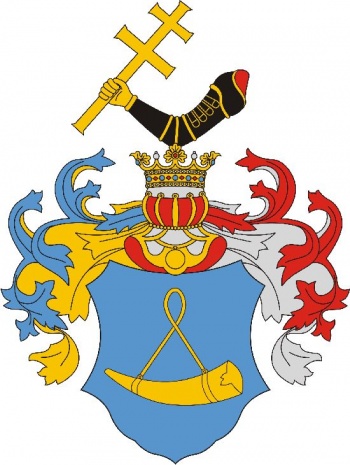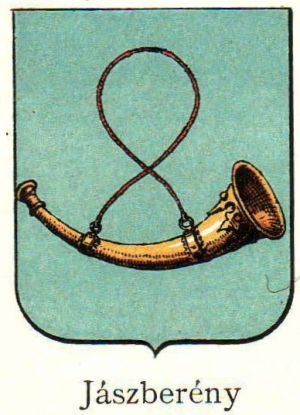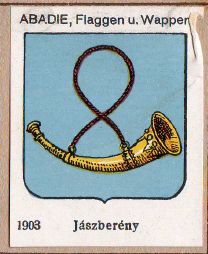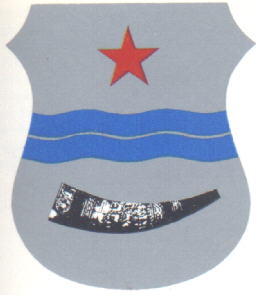Jászberény
JÁSZBERÉNY
Province (county) : Jász-Nagykun-Szolnok
| Hungarian | blazon wanted |
| English | blazon wanted |
Origin/meaning
The arms show the legendary Lehel horn as described in the fourteenth century Chronicon Pictum, written in Latin by Marci de Kalt:
"In 955, (...) the Hungarians reached the city of Augsburg. Close to the city, at the Lech field, the Germans smashed the Hungarians, part of them were killed brutally, some others were imprisoned. At that place Lehel and Bulcsú were also imprisoned, and taken in front of the emperor. When the emperor asked, why the Hungarians are so cruel against the Christians, they replied, "We are the revenge of the highest God, sent to you as a scourge. You shall imprison us and kill us, when we cease to chase you." Then the emperor called them: "Choose the type of death you wish". Then Lehel replied, "Bring me my horn, which I will blow, then I will reply". The horn was handed to him, and during the preparation to blow it, he stepped forward, and hit the emperor so strongly he died instantly. Then he said: "You will walk before me and serve me in the other world", as it is a common belief within the Scythians, that whoever they killed in their lives will serve them in the other world. They were taken to custody and were hanged quickly in Regensburg." (Wikipedia)
According to legend the horn was somehow returned to Hungary and kept in Jászberény.
The blue colour refers to the wide and open fields as well as to the many streams, rivers and swamps in the area.
The coronet indicates that since the middle of the 14th century Jászberény has been one of the centres of the Jazygian region and had a twon charter. The coronet also evokes the fact that the citizens, based on nothing but their own resources, repurchased their lands, which were unlawfully possessed by the Teutonic Knights.
The armoured right arm is a symbolic representation of the fact that, from the second half of the 13th century to the beginning of the 15th, the Jazygians and the Cumans formed a decisive part of the royal army, and that they took their share of the patriotic wars as well as of the wars of national independence, in which the legendary Jazygian-Cuman hussars were especially famous.
The patriarchal cross held by the armoured hand relates to the keenness in the defence of Christianity, to the mediaeval church built here, to the monastery-founding Franciscans who settled down here in 1472, to the local people who rebuilt their churches after the expulsion of the Turks, and to the religious citizens of today alike.
| The arms by Ströhl, 1902 |
The arms in the Abadie albums |
During Communist rule, the arms still showed the horn, but now with the Hungarian Star and a wavy bar for the Zagvya river. All references to Christianity and the Jazygians were removed. After 1990 the old arms were restored.
| The arms in the 1970s |
Contact and Support
Partners:
Your logo here ?
Contact us
© since 1995, Heraldry of the World, Ralf Hartemink 
Index of the site
Literature : http://www.nemzetijelkepek.hu; Robert and Bela, 1975; Ströhl, 1902













